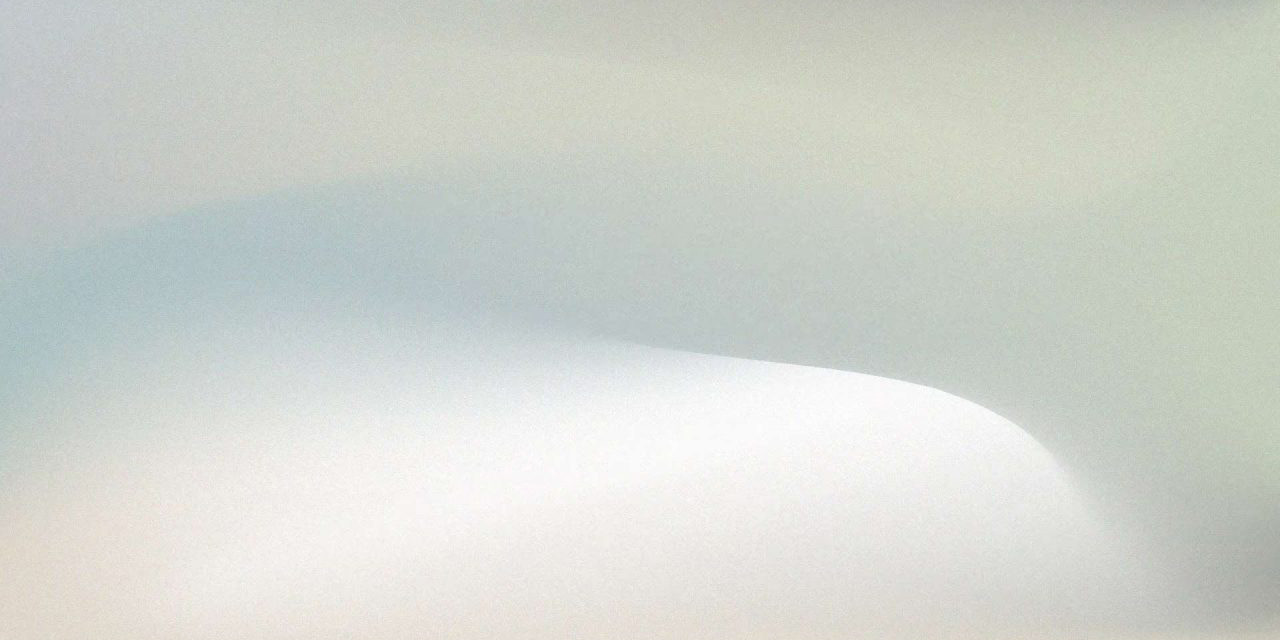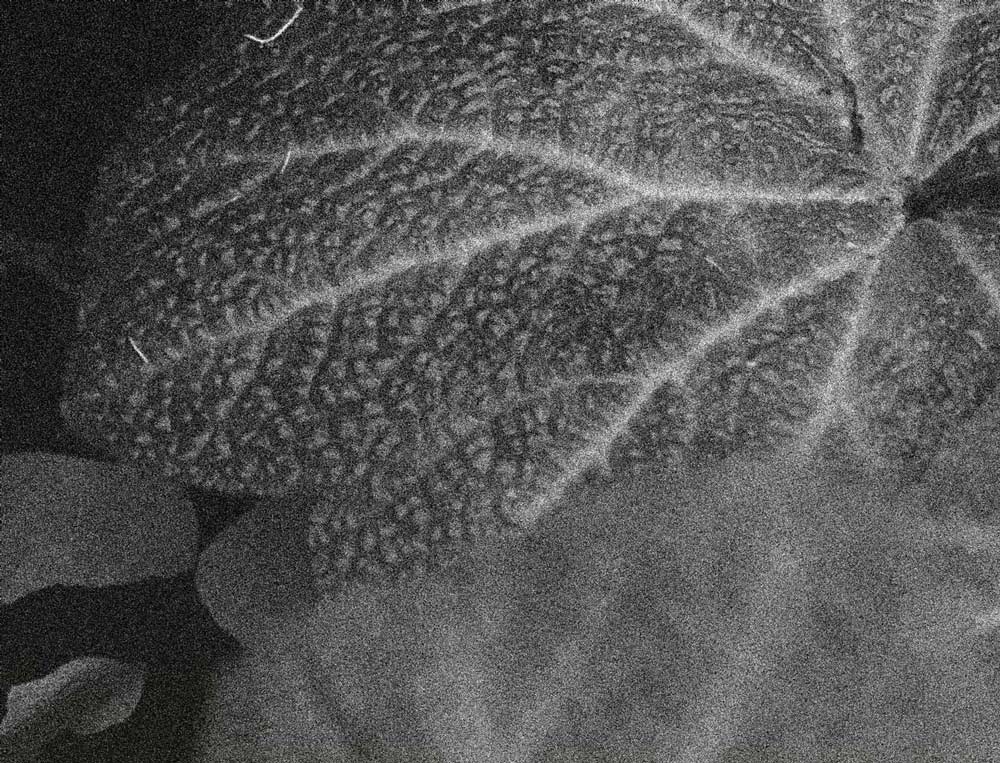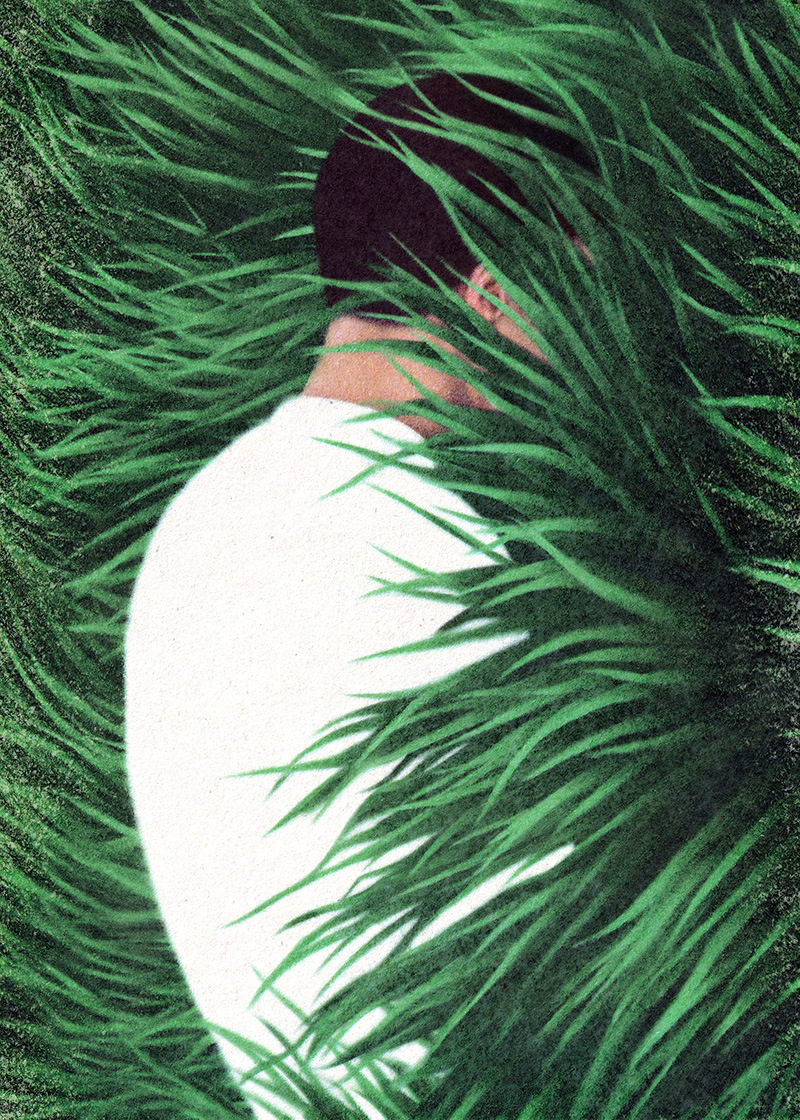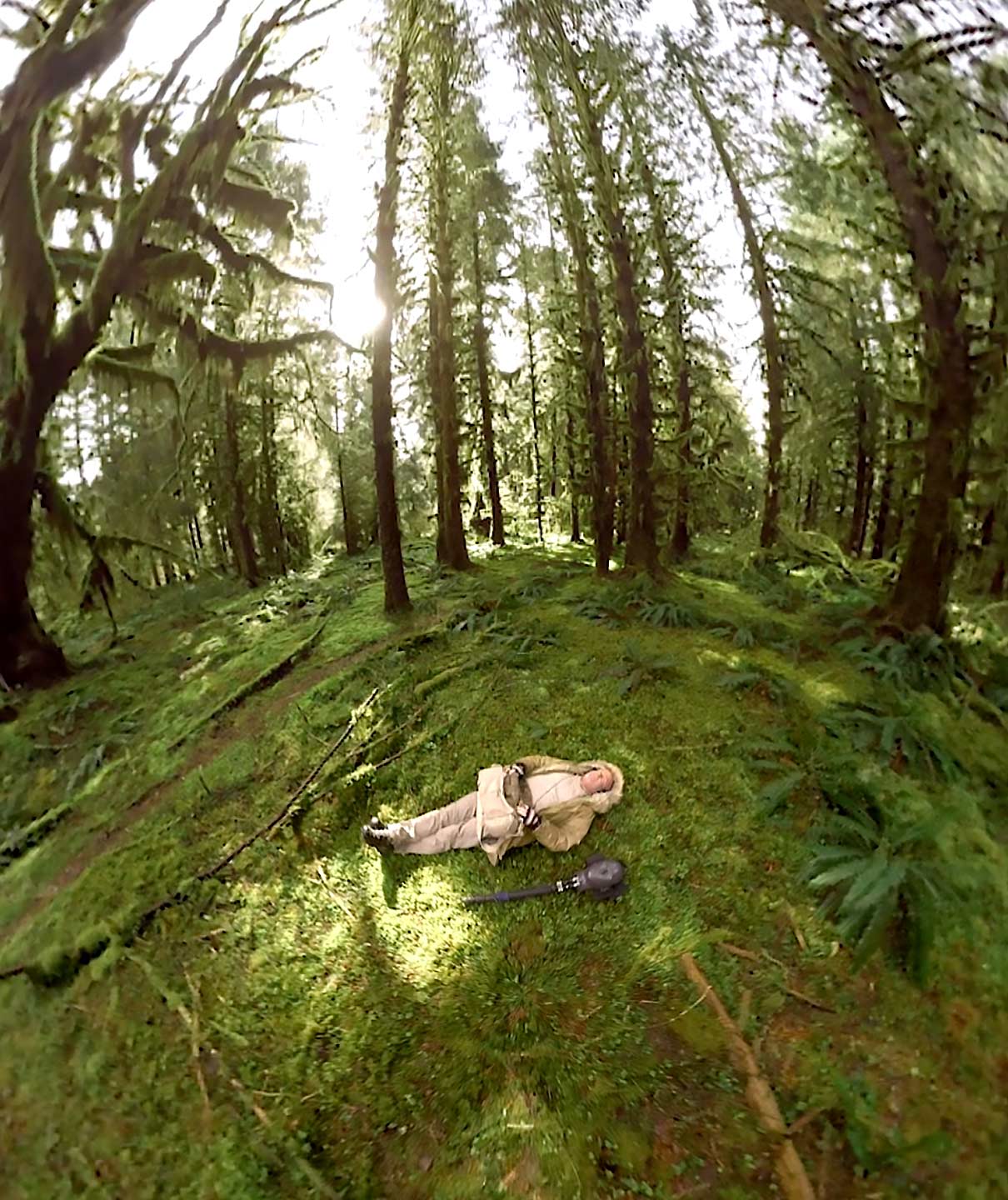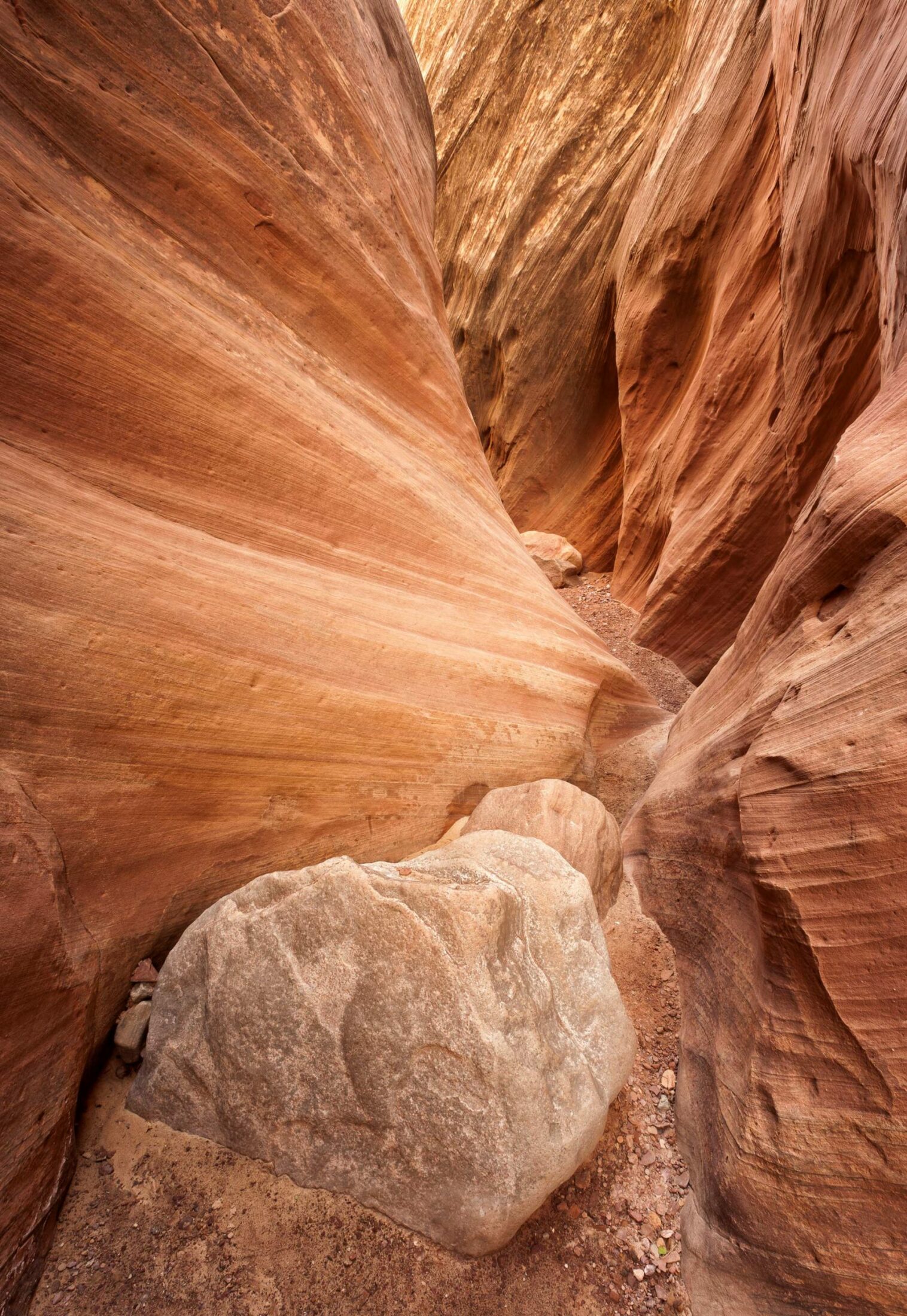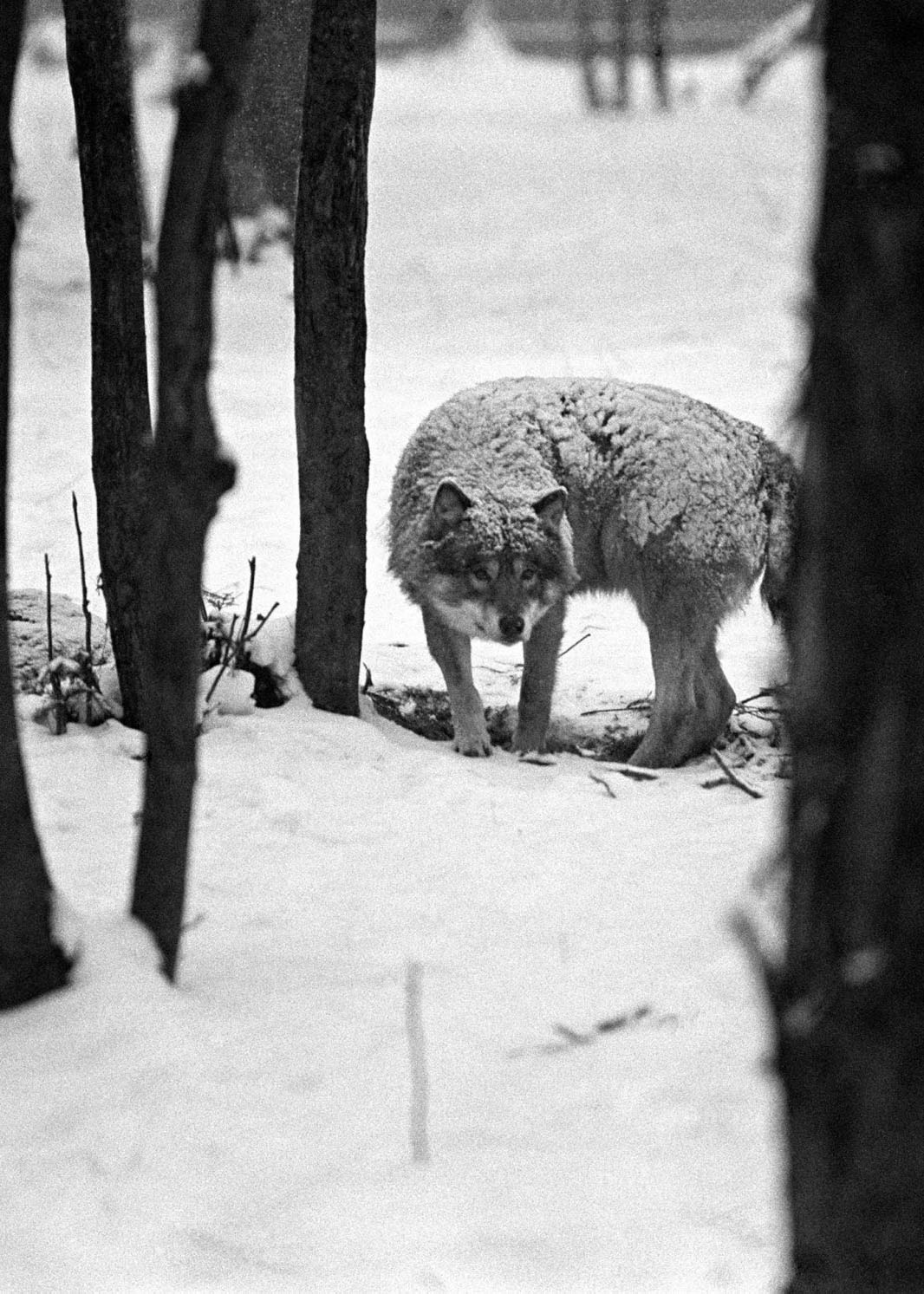
George Prochnik is the author of In Pursuit of Silence: Listening for Meaning in a World of Noise and The Impossible Exile: Stefan Zweig at the End of the World, which received the National Jewish Book Award for Biography in 2014 and was shortlisted for the Wingate Prize. Prochnik is editor-at-large for Cabinet magazine and has written for The New Yorker, The New York Times, Bookforum, and The Los Angeles Review of Books. His latest book Heinrich Heine: Writing the Revolution is forthcoming from Yale University Press.
Studio Airport, founded by Bram Broerse and Maurits Wouters, is an interdisciplinary design studio that ventures out into the cultural ether to forage for anomalies, creating work that spans art, culture, science, and ecology. In addition to Emergence Magazine, their creative partners include the Design Museum, See All This Art Magazine, Slowness, Normal Phenomena of Life, and Sapiens Magazine. They serve as master tutors at the Design Academy Eindhoven and were recognized as European Agency of the Year 2024 by the EDA.
George Prochnik’s book In Pursuit of Silence examines our human relationship to sound and what is lost when we can no longer find quiet. In this essay, George continues his exploration through a reflection on this issue’s virtual reality film, Sanctuaries of Silence, looking at how acoustic experiences reveal not only what we hear but where we are.
1
If the early mammals whose ears were the evolutionary precursors of the human organ had created a mythology, it would have been a mythology of hearing. An epic dream in which they could discern every snap, call, cry, drip, and burble in the universe, and where this perfect acoustic consciousness would enable them to live in the sheltering shadows, on the verge of invisibility.
These tiny creatures existed in a world dominated by large, ravenous predators. They moved about in darkness, undercover, mapping the location of every sound they could perceive, often by gauging the different frequencies at which a given noise struck each ear successively. That auditory global positioning system enabled these protomammals to survive by providing them with advance warning of approaching threats (cracking branches, rustling leaves) and the whereabouts of sustaining environmental features (trickling water, birdsong that signaled a pacific haven).
The reliance of these ancestral animals on sound to assess danger and chart safe spaces was so determinative that, over time, the mammalian ear became not just incredibly sensitive, but a powerful, active amplifier. Indeed, the human ear cranks up the volume of sound a hundred times beyond its energy level outside our bodies. Sound perception anchored our predecessors in the world. And it’s not coincidental that researchers who’ve worked with people suffering from sudden-onset deafness have observed that often the first response to this abrupt sensory loss is not, “Why can’t I hear anything?” but rather, “Where am I?”
The evolutionary backstory of human hearing resonates with the way that Gordon Hempton, an acoustic ecologist, describes his initiation into real listening in the film Sanctuaries of Silence. On a chance pause during a road trip as a young man, a storm arose; Hempton heard the thunder “define the far reaches of the valley” as the tempest passed over him. Sound graphed the contours and breadth of the surrounding world. It situated him absolutely in space, even as it diminished the significance of his individual self in the panorama of being. The experience was sacral. Hempton calls it a “baptism,” and it clearly accorded him a kind of revelation about the magnitude of the untamed native wilderness. Even where the visual scenery might have been interrupted by some human development—if nothing else, there was the road before him—the aural landscape, that thunder, had rolled on indomitably.
At some point the inability to “hear oneself think” becomes the inability to think at all.
After this transformative event, Hempton went on to make a vocation of listening. He discovered that the use of a microphone turned him into a better listener, because he learned to take his cue from that tool, which didn’t judge the relative value of the different sounds it was absorbing. Having always in the past striven to listen for the “important” sounds, Hempton stopped trying to prioritize based on his own limited perspective and discovered the majesty of the uncurated soundscape.
In beginning to hear without privileging certain sounds over others, he found that every place on earth has a unique sonic character. But, intriguingly, Hempton defines his different experiences of geographically specific auditory signatures as experiences of silence, which he calls the “poetics of space.” (The Poetics of Space is also the title of a book by the French philosopher Gaston Bachelard, who wrote of how in silence “we are seized with the sensation of something vast and deep and boundless.”) In the sound-filled silences of the natural world, Hempton explains, “the whole topography of the surrounding landscape is revealed to me in the many layers of the echo that comes toward me, and I think to myself, I know exactly where I am.”
The profundity of this knowledge sensitized him to the dangers of noise pollution, which replaces that vibrant heterogeneity with often generic, itinerant smears of sound that make us defensively close in on ourselves. In response to noise, we plug our ears and flinch back. We shut our doors and windows. To flee our manmade sonic excesses, we do everything we can to cut ourselves off from the larger environment. One way to think about noise pollution is as a booster drug to all the other dissociative tendencies that imperil our larger ecology. The less we can bear to be out and about in our roaring, blasting, shattering, hyper-chattering world, the less likely we are to observe it closely enough to know what might still be done to salvage its remaining assets. At some point the inability to “hear oneself think” becomes the inability to think at all.
To counter this danger, environmental activists around the world are advocating for the creation of natural sanctuaries of silence.
2
The ancient Greek ideal of the temple-sanctuary is taxonomized by Herman Melville in terms that emphasize its ecological intentionality:
Not magnitude, not lavishness
But Form—the Site;
Not innovating wilfulness
But reverence for the Archetype.
Melville was alluding to the way these buildings were intended to manifest aspects of the gods both in their marble form and through their dramatic positioning in the larger landscape. The sanctuaries acquired a kind of divinity by virtue of their sublime resonance with their physical setting; along with their embrace of natural features associated with the particular god to whom the temple was dedicated, such as a sacred wellspring or grove of trees. “The temples themselves came late,” comments the art historian Vincent Scully on the ancient concept of worship sites. “First, as the Greeks knew, was the earth.” That is to say, initially there was the world’s own holiness, “well-founded Earth, mother of all, eldest of all beings … Mother of the gods, wife of starry Heaven,” in the words of one Homeric hymn.
Elaborating on this idea, we might speculate that what gave the Greek temple such potency in the eye of the ancient beholder was the structure’s profound receptivity to its wondrous surroundings—an attentiveness that inspired the visitor’s own porosity to the Cosmos. These buildings defined the intersection between immanence and transcendence. Their harmonious proportions in relation to the natural trinity that the writer Edith Hamilton identified as “the hills and the seas and the arch of the sky” were designed not just to induce a sense of serenity but also to spark awe.
The etymological roots of the word “sanctuary” have no connection to the idea of security, at least in any easily comforting sense. The term’s Latin origins are instead words meaning “holy” and “consecrate,” with all their awesome connotations. In Samuel Johnson’s famous dictionary, the first definition of sanctuary is “a holy place; holy ground. Properly the penetralia, or most retired and awful part of a temple.” The temple sanctuary in this understanding is where the raw force of the god resides—immortal and spectacular. When that force is appeased, it can be supremely protective and nurturing; but it can also be terrifying.
We have thus far seen nothing of Nature’s real identity.
These ideas chime in intriguing ways with Thoreau’s meditations on the value of wildness as an engine of individual and cultural rejuvenation. “In Wildness is the preservation of the World,” he declared in the essay Walking. “Give me a wildness whose glance no civilization can endure.” Part of what he’s advocating for is the renewing character of the unknown. So-called higher knowledge, he opines, may not amount to “anything more definite than a novel and grand surprise on a sudden revelation of the insufficiency of all that we called Knowledge before.” From this it follows that, “Hope and the future for me are not in lawns and cultivated fields, not in towns and cities, but in the impervious and quaking swamps.” The special type of sanctuary he extolled was nothing less than the “raw material of the world”—a kind of invaluable reservoir of vitality that corresponded with an inner sanctum of wildness inside each individual.
In Walden, Thoreau exhorted his readers to become “the Lewis and Clark … of your own streams and oceans; explore your own higher latitudes.” To perform this role required a form of listening that bore affinities to prayer, in which the action of thinking transported the self beyond the everyday business of civilization. Thoreau writes of how, when one walks alongside a railroad track in the midst of the kinds of higher thoughts that stitch the spirit to the natural environment, the train cars rattle by unheard. “But soon, by some inexorable law, our life goes by and the cars return.” That idea of life going by instead of the cars the moment we lose our connection to the wilderness is frightening, and provokes Thoreau to interrupt his prose with poetry:
Gentle breeze, that wanderest unseen,
And bendest the thistles round Loira of storms,
Traveller of the windy glens,
Why hast thou left my ear so soon?
In our relations with Nature, he continues, “men appear to me for the most part, notwithstanding their arts, lower than the animals. It is not often a beautiful relation, as in the case with animals.” Part of this ugliness is due to a false confidence in proclaiming what Nature is—projecting our own character traits over that wild sanctuary. “Nature is a personality so vast and universal that we have never seen one of her features,” he marvels. Consider the mortifying extremity of that claim—we have thus far seen nothing of Nature’s real identity—and also the hopefulness this postulate conveys regarding how much remains for us to discover.
3
Thoreau was not reflexively hostile to technology, or the manmade features of the environment. But he worried about the depleting consequences—spiritual, mental, and physical—of allowing the wild, silent spaces to become pinched too tight by civilization. He protested the growing imbalance between our material culture and the natural landscape. Some years ago, in my book In Pursuit of Silence: Listening for Meaning in a World of Noise, I argued that one of the binds we’ve gotten into as a society in battling noise derives from a semantic confusion. When we consider other forms of pollution—air, water, land—it’s obvious that the ideal would be to have none at all. To breathe air free of all pollutants could only be healthier than to have to contend with even low-level particle contaminants. But noise doesn’t work that way. Very few of us long for the absolute quiet of outer space or the anechoic chamber. In fact, on the right occasion, in the right mood, many people enjoy blasts of loud sound: music, engines, or fireworks. The stimulation might even be tonic. Moreover, virtually everyone enjoys hearing certain noises throughout their day, although many of these positive noises are natural, orienting ones, such as birdsong or falling water.
Rather than a binary conflict between dead silence and corrosive noise, I encouraged people to view their relationship to sound through the lens of something closer to a dietary model. Just as no one should either starve or stuff themselves with food, there’s a balanced approach to sound intake that could prove more nurturing than the overstimulating glut of rich, processed noises that form the diet of many people around the world today. We would all do well to do everything we can to structure a more balanced, naturally sourced, and varied daily intake of diverse sounds—a healthier sonic pyramid—interlaced with those restorative silences in which the sublime wildness still resides.
To do so would require us to engage more consciously with ideas of noise and silence that get beyond the subjective biases of these concepts as they’re conventionally deployed. (The problem encapsulated in the feeling that a neighbor’s music is always noisier than one’s own.) We might think of noise, whether desired or dreaded, as sound that, for the time we’re subject to it, dominates our perceptions; whereas silence is the state in which we find ourselves taking in the most varied array of sounds possible. In this sense, silence would be the particular equilibrium of quiet and sound that allows us to relax our resistances and maximize our connection to the world around us.
The noise produced by society has continued to rise with increased air and land traffic, as well as the groans and shrieks of aging transportation systems, construction, the continued proliferation of intentionally loud leisure venues, and the ubiquity of personal sound devices feeding constant music and voices directly into our aural passages. Perhaps partly in response to this, we’ve also seen an ever more sophisticated co-opting of the conceit of sanctuaries into the consumer-culture arena. We’re promised that key products and material lifestyles will transform our world into an immaculate, tranquil hermitage. Acoustical design plays a major role in this marketing of impregnable domestication. The sound of our cars, our kitchen appliances, our smart devices—even the pop of lipstick container tops coming off, digital camera shutters, and the crunch of certain foods—are all carefully curated, sonically branded, to trigger emotional responses in the most vulnerable regions of our brain. So are the social media platforms we treat as our digital homes. The relatively new field of neuromarketing, which draws on the sorts of data research and exploitative techniques employed by Cambridge Analytica in the last presidential election on behalf of then-candidate Trump, is adding to the power of these efforts. As the CEO of SalesBrain, one neural marketing firm, asked his audience in a recent keynote event, “What if you could discover a language that can help you influence anyone, anytime you wanted? What if you could apply this language at work to close more business, or even at home with a family member, possibly even your children? Any takers?” The audience burst into laughter.
“I think what I enjoy most about listening is that I disappear.”
Reflecting on the way that humanity had become subsumed within the spiritually impoverished ecology of economics, Ralph Waldo Emerson remarked, “Things are in the saddle, and ride mankind.” If silence is the poetics of space, the ultra-manipulative noise associated with acoustical branding might be considered the antipoetic prosthetics of spirituality. Its purpose is to seal the consumer off absolutely from the surrounding world, substituting the soundtracked bubble of a particular marketed fantasy for the biosphere, so that, to flip Hempton’s line on its head, You have no clue where you are. In this state you are completely exposed—vulnerable to the predation of those trying to sell you something: an object, a look, a leader.
At the end of Sanctuaries of Silence, Hempton makes a provocative remark: “I think what I enjoy most about listening is that I disappear.” What is the nature of this disappearance? On the one hand, following from the idea of the innermost chamber of the temple-sanctuary as a place in which offerings were made to the gods, we might view it as a kind of self-sacrifice. Yet because the disappearance Hempton invokes involves an intense awareness of everything around one, the self-effacement might also be understood as an enlargement. Giving oneself over to the panoply of surrounding sounds, one’s consciousness adds their nature to one’s own—effectually merges into them.
This final possibility returns us to our imaginary mythology of hearing. If the objective of hearing at its inception was to enable creatures to chart the location of threats in space in order to elude them, why would we thrill at the sound of deep and boundless expanses? What would be the lure of an unknown, undomesticated sonic landscape? Why pursue the auditory equivalent of what the early twentieth-century conservationist Aldo Leopold alluded to when he averred, “I am glad I shall never be young without wild country to be young in. Of what avail are forty freedoms without a blank spot on the map?”
The quest for safety might take the form of burrowing underground, or just running away. But it could also take the form of a profound act of camouflage, blending into the larger, awesome environment, with the trust that this space will remain mysterious—a sanctuary of infinite dimensions to which you gain entry by absorbing and echoing the beautiful silence.
